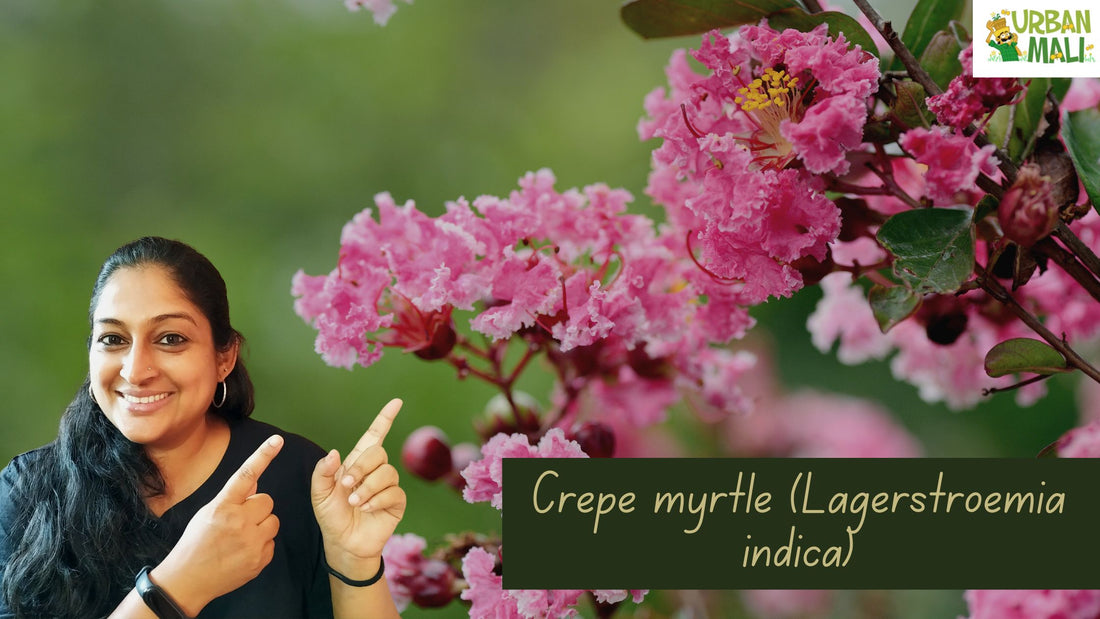The crepe myrtle is native to India and Southeast Asia. This plant has gained popularity because of its ability to withstand drought conditions and thrive in poor soil.
It is commonly called the Pride of India, Indian crape, and Common crapemyrtle,. The purple flowers are seen during the summer season.
This evergreen shrub/small-sized tree grows well in full sun and partial shade. It requires regular watering during dry spells. If you want to bring this beauty into your garden, start with seedlings. Plant them at least 3 feet apart.
There are several varieties of crepe myrtle plants available. Some are evergreen, some deciduous, and some even bloom year-round. Most types are suitable for both indoor and outdoor gardens.

Crepe Myrtle Care
The crepe myrtle tree is one of the easiest plants to care for and maintain. This evergreen shrub grows quickly and needs minimal pruning. Crepe myrtle prefers full sun and well-drained soil. It does best in climates where temperatures do not drop below freezing.
Crepe myrtles are easy to grow and require little maintenance. They are good for areas with pollution. They prefer well-drained soil. They are good choices for an urban garden. They are great for adding color to any landscape. Crepe myrtles grow quickly and bloom early in spring. It grows well in many different soil conditions.
You just need to water regularly during dry periods and fertilize lightly twice per year.
It is a fast-growing shrub that blooms in late winter/early spring. It grows best in full sun and well-drained soils. This plant requires little maintenance once established. In fact, it does very well without much attention at all. Crepe myrtle prefers a pH range of 5.5 - 7.0. It is drought-tolerant and thrives in areas where temperatures do not drop too low during the coldest months.
The crepe myrtle is often used as a specimen tree because of its beautiful flowers and large leaves. However, it is also an excellent landscape plant due to its ability to thrive in many different environments.

Uses
- Its leaves are used to make tea and herbal medicines.
- The roots of L. indica and are used in traditional Chinese medicine as a tonic, stimulant, and aphrodisiac.
- It has been used to treat asthma, bronchitis, coughs, fever, headaches, indigestion, insomnia, nervousness, rheumatism, sore throat, stomachaches, and toothache. The bark is used to treat burns and wounds.
- The flowers of the plant are used to make perfume and essential oils.
- The seeds are used to make incense.
- Wood is used to make furniture, musical instruments, and tools.
- The leaves of Lagerstroemia species contain tannins that are used for medicinal purposes such as treating diarrhea, dysentery, and malaria.
- Lagerstroemia indica has been used for centuries in India for treating various diseases such as diabetes, fever, coughs, colds, indigestion, stomach ache, and other ailments. The leaves of the plant contain tannins which help reduce inflammation and relieve pain.
- The leaves of the plant are used in folk remedies to treat coughs, colds, and fevers.

Next step
Gardener services
Landscaping services
Online nursery
Organic pesticides and fertilizers
Extra reading
12 months flowering plants in India
Night queen (Cestrum nocturnum)
Nithya pushpa (Catharanthus roseus)
Happy Gardening!
Dr. Vandana K.

